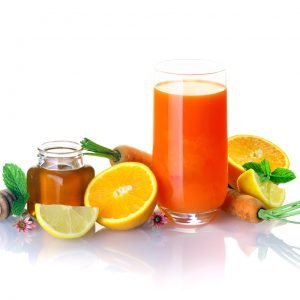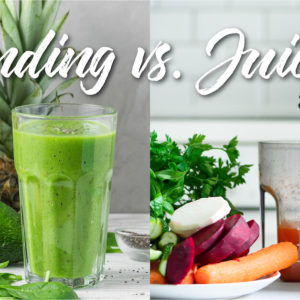Are you a pulp or no pulp person when it comes to your orange juice? Juicing and Blending are the processes of creating drinks that give you pulp or no pulp, fiber or no fiber. Why should you keep the pulp? Or, is it not good for you? Or does it even matter?
What is Juicing?
Juicing machines are used to juice the liquids, including water and nutrients, from fruits and vegetables, with the end result being a glass of juice. Then, the fiber of the vegetables and fruit are thrown out.
The nutrients of the vegetable or fruit are available right away for your body, faster than if you ate it whole. By removing the fiber, you give your body a direct chlorophyll-rich water that doesn’t require any work to digest. Juicing gives you a transfusion of every mineral, vitamin, and nutrient immediately. A process called, autolysis, takes place in the body when you drink juices. Due to the body not having to digest, it can get rid of the aged and damaged cells.
Who should Juice?
If you have a sensitive digestive system, or a chronic sickness that you are restricted on fiber intake, juicing is a great option if you want to consume a very large amount of fruits and vegetables, which otherwise is not consumed during the day.
The Cons of Juicing
Since the nutrients are available right away, and fiber is not there to slow down the process, your blood sugar will rise quickly.
What is Blending?
When you blend a drink in a blender, you can keep all skin and contents on the vegetable or fruit, giving you all the fiber from the produce. The blending process does break up the fiber, making it easier to digest, and creating a slow, steady release of nutrients.
Who should Blend?
If you are diabetic, blending is a better option for your blood sugar regulation. Unstable blood sugar levels can create mood swings, fatigue, and memory problems.
Parents or busy people who have no time to sit for breakfast can blend a smoothie very quickly and drink it on the road. Whereas, juicing is time consuming.
Workout enthusiasts should choose blending over juicing. This is because of the slow, steady release of nutrients. If you are doing a short workout, juicing can be an option.
If you are looking to shed some pounds, blending smoothies can act as a meal substitution. You can add protein to them, whereas, juicing is limited.
Tips for Blending and Juicing:
- When blending, keep your smoothie “chewing” consistency. If you blend it too much, you skip the part of digestion in which saliva releases enzymes to separate the nutrients of liquid and fiber.
- When juicing, do not supplement juice for meals. Sticking to juice alone in the diet can decrease your metabolism. Your body needs other nutrients besides what fruits and vegetables provide, especially when juiced.
- When your smoothie or juice is ready, try to drink right away. When exposed to air for too long, the antioxidants are broken down, leaving the drink less nutritious.
Which is Better?
There is no answer on which is the best choice because both have amazing benefits to the human body. Nutrition experts want people to have a diverse experience with juicing, blending, and eating them whole. Americans right now do not get near the recommended 5 – 13 servings of fruit and vegetables, therefore blending and juicing are both beneficial to our health.
Sources:
http://foodmatters.tv/articles-1/juicing-vs-blending-which-one-is-better
http://www.thefullhelping.com/question-of-the-week-to-blend-or-to-juice/
http://www.npr.org/sections/thesalt/2015/01/29/382422706/blending-vs-juicing-how-to-get-the-most-nutrition-from-your-fruit
http://www.incrediblesmoothies.com/green-smoothies/green-smoothies-vs-green-juices-which-is-better/









Trying to find out what food stops high blood pesure why don't you just say the food your video does not up load